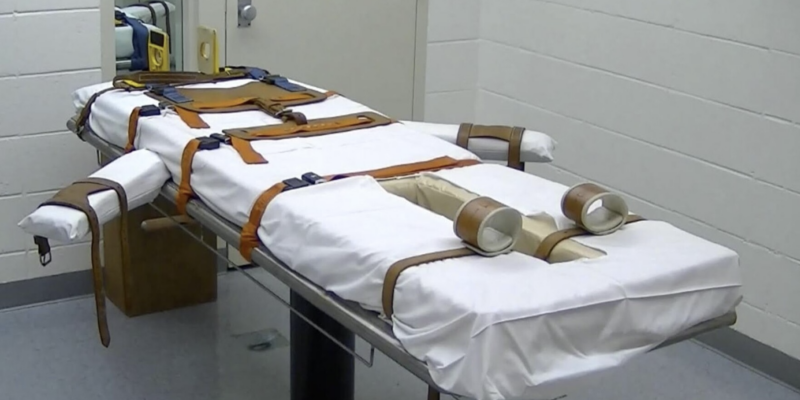TALLAHASSEE—Serial killer Glen Rogers, set to die next week, is claiming that Florida can't execute him using the state's default method, lethal injection, because his rare blood disorder would cause "needless pain and suffering."
But that's not the state's only option.
The Florida Legislature passed a sweeping bill last week allowing death row inmates to be executed by firing squad, hanging, or any new method lawmakers can think of—as long as it's not unconstitutional.
This changes current law, which exclusively allows inmates to be executed using lethal injection or the electric chair, though electrocution hasn't been used in over 25 years.
Although the bill won’t take effect until July 1—potentially sparing "Casanova Killer" Rogers from a new, state-sanctioned execution—its signing by Gov. Ron DeSantis would usher in uncharted waters for how Florida handles death penalty cases, particularly at a time when DeSantis is rapidly ramping up executions.
He's already approved five death warrants in 2025 alone, putting him on track to surpass his personal record of six executions in a single year.
"We're actually injecting another option for the death penalty," bill sponsor Sen. Jonathan Martin, a Republican, said on the Senate Floor. "We don't have to look at only the options that are currently out there being used by other states.
"There could be other options out there," he added, stressing that Florida would only consider options not deemed unconstitutional.
The snag?
No death penalty method has ever been found to be unconstitutional, the Tampa Bay Times reported. This leaves the door open for execution methods, like the gas chamber, or other, never-before-tried methods.
"The bill as passed is extremely broad and could lead to Florida using virtually any other method," Maria DeLiberato, Executive Director of Floridians Against the Death Penalty, told The Floridian. She pointed to Florida's "troubled history" of botched executions, which includes five inmates since 1990 suffering horrific, unintended consequences from electrocution or lethal injection.
Why is "Casanova Killer" Glen Rogers on Death Row?
Glen Rogers, 62, once boasted that he killed as many as 70 people.
But that was just a joke, he claimed later.
Rogers was convicted in 1997 of stabbing Tina Cribbs to death in his Tampa motel room after meeting her in a bar. He stole her car and fled the state, using her money at a gas station on his way north. He was arrested days later in Kentucky, after leading officers in a 13-mile high-speed chase complete with Rogers chucking beer cans at officers' windshields.
Two years later, he was convicted—again—and sentenced to death—again—in California for the rape and murder of Sandra Gallagher. He was also a suspect in the 1994 Ohio murder of Mark Peters, the 1995 killings of two other women in Mississippi and Louisiana, and was even thought to have killed O.J. Simpson's ex-wife, Nicole Brown.
Why?
Because he kept claiming that he had. But the "Casanova Killer" was cleared by the Los Angeles Police soon after.
Gov. Ron DeSantis signed his death warrant on April 15, scheduling the execution for May 15. Rogers has since asked the Florida Supreme Court for a stay of execution, citing his alleged sexual abuse as a child, issues with his initial trial, and his rare medical disorder—porphyria.
Porphyria, a genetic condition, can cause wide-ranging blood, skin, and nervous system problems due to the buildup of hemoglobin proteins in red blood cells. Rogers's attorney claims a "full evidentiary hearing" is needed to determine whether the drugs used for lethal injection will cause Rogers "needless pain and suffering" during his execution.
Dr. Joel Zivot, who examined Rogers, said a "substantial risk" exists for Rogers to experience "excruciating pain" because of his disorder, violating the Eighth Amendment's ban on cruel and unusual punishment.
Rogers is set to be the fifth death row inmate executed in Florida this year.
What are the Most Common Death Penalty Methods?
According to the Death Penalty Information Center, over 1,400 of the 1,622 executions nationwide since 1977 have been attributed to lethal injection.
That's roughly 88%.
Here's the breakdown of the other four most common methods of execution in the United States:
- 163 people have been killed via electrocution, the most recent being in Tennessee in 2020.
- 16 have been executed through lethal gas, the latest being in Louisiana in March of this year.
- Five people have been executed by firing squad, the most recent being in South Carolina last month.
- Three people have been executed by hanging, the most recent being in Delaware in 1996.










